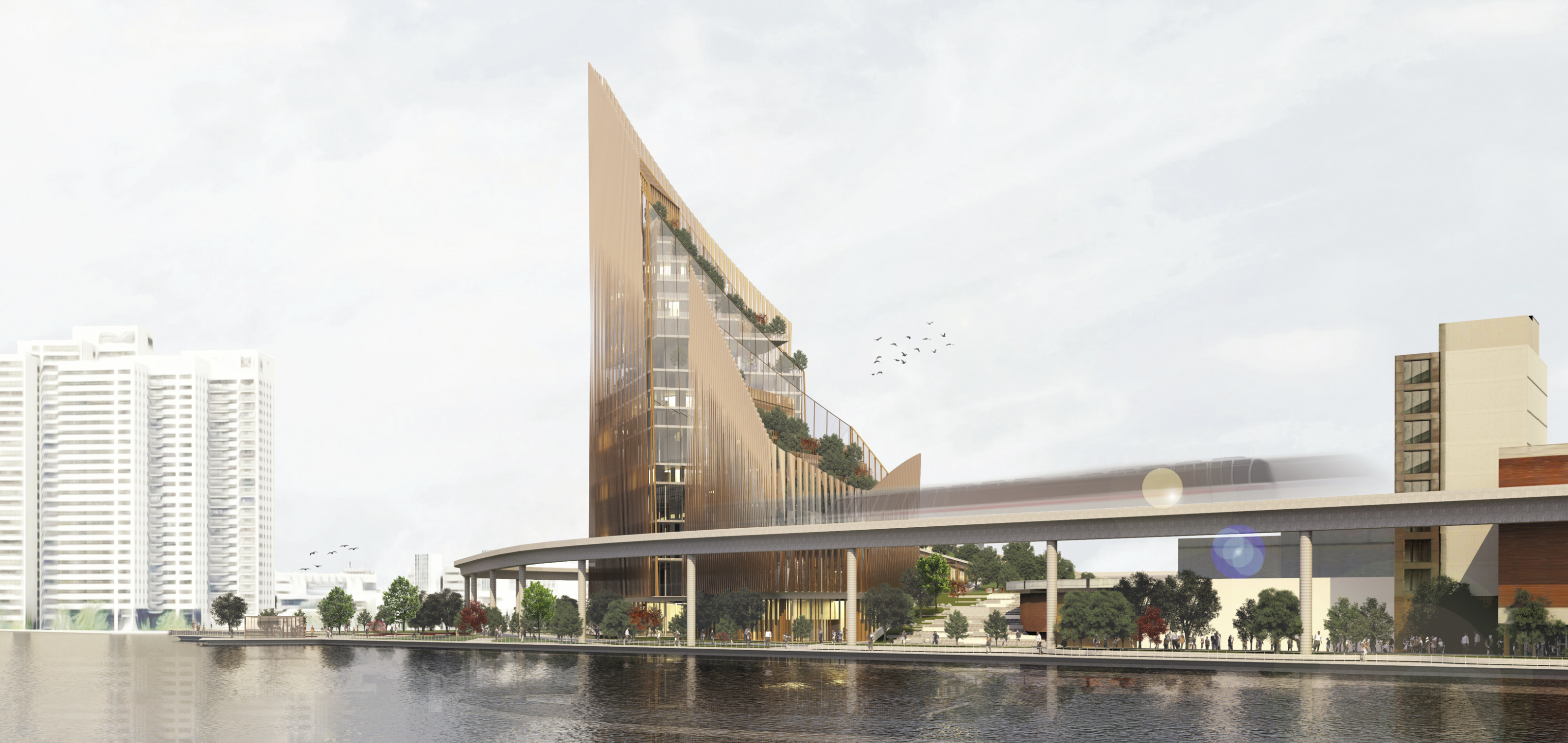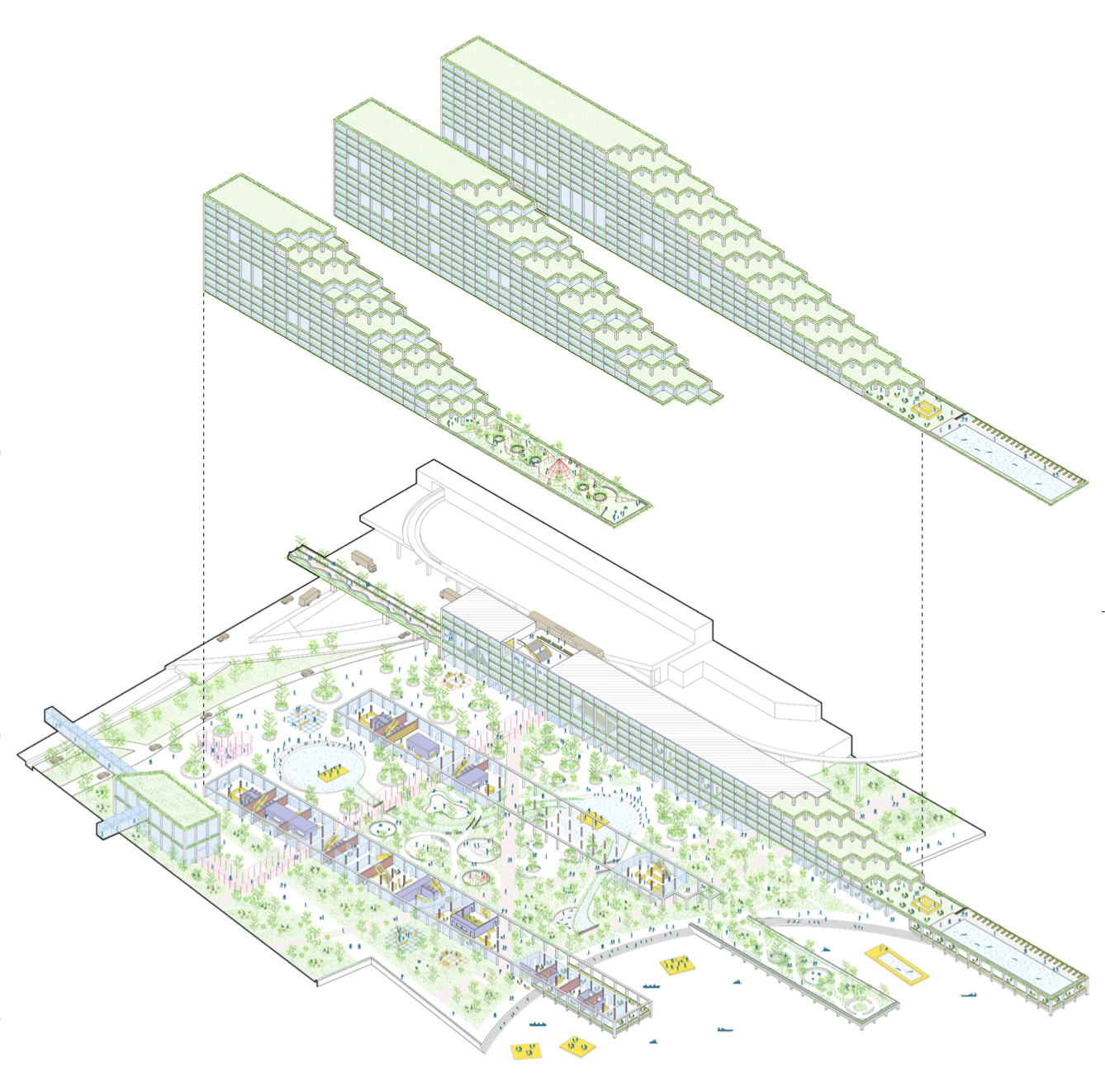The winning projects of the second edition of the Manni Group Design Award have been nominated: the panel of international starchitects have selected the most innovative and sustainable proposals that will redesign the Detroit skyline.
American metropolises are represented by their own skyline: the Detroit Waterfront District contest offered architects all around the world the opportunity to design the profile of the future Detroit, thanks to elements intended to become the new icons of one of the most famous and controversial cities in the West.
The other aspect of Detroit extends in the shadows of the gleaming skyscrapers in the Downtown district, which consists of an immense succession of deserted streets and abandoned buildings deriving from the rapid growth in the 50s and the subsequent population decline due to the economic crisis. This enormous and multifaceted void in recent years has generated new opportunities: a wave of innovation transformed those decadent places into the centres of urban regeneration.

The second edition of the Manni Group Design Award, which has Libeskind Studio, BIG, Clive Wilkinson Architects and Pininfarina among the judges, has launched a contest of ideas to redefine the Michigan city skyline that overlooks the Detroit River. The new capital centre of the automotive industry will rise on the grounds of the former Joe Louis Arena, right next to the headquarters of General Motors and the TFC Center – the huge convention centre that hosts concerts and the most important events in the automotive sector.
Manni Group is the project promoter in collaboration with Sterling Group, an investment and Real Estate company in Detroit. The partnership with YAC - Young Architects Competition – the platform for architectural competitions with a community of over 4,000 designers around the world – has been renewed following the success of the Xi'an Train Station Contest.
In this second edition, the following have been fundamental: the support given by the Main Sponsor Tata Steel – one of the major steel companies in the world, which awarded a GOLD Mention from Colorcoat Prisma® for the sustainable design of the building – and the presence of the Sponsors Dow – a partner of Manni Group in the development of innovative technologies – and ROCKWOOL – a leader in the sector of mineral wool products.
Criteria, such as offsite steel construction technologies and attention to the sustainability of buildings were considered in the selection of the proposals received. Following a thorough evaluation, the prestigious international starchitects panel officially declared the winners of the €20,000 prize. Below is a bio of the top three of the Detroit Waterfront District contest.

The team that won the contest is French: Clément Meynard, Thomas Labarthe, Sergey Guichard, Jung Hwan Kim designed the project for a new urban hub, connecting the Detroit Riverwalk Park to the historic Washington Boulevard. The Garden Rift Tower – dynamic and shimmering thanks to its copper cladding – is an extrusion of the park flanking the river: the greenery is the actual link between the three architectural blocks, which create suspended gardens thanks to their characteristic slopes, and allow the public area to enjoy a new panorama of the city. The volumes not only give life to an unprecedented metropolitan skyline, but generate the actual artificial topography of a city that builds the future based on its past.

The Spanish team, formed by Miguel de Rojas, Gerardo Peregrín and Marc Amigó Cañas, ranks second based on the motto: “Let's build the future of Detroit together”. The three blocks of the Detroit Waterfront District slope toward the river, creating endless intersections where the social communities and diverse cultures in Detroit can coexist. The vegetation encompasses the actual integration between the architecture and the water element: the in-depth study of the project sustainability considered the entire lifecycle of the building, from its offsite prefabrication in steel to its onsite assembly, transporting the materials across the water. The end result is a new city centre attraction with a low environmental impact, which benefits from a high social impact.

The third prize of the contest has been won by the Polish team: Joanna Cieslikowska, Sylwia Darewicz, Aleksandra Wtulich and Weronika Majchrowicz. Detroit 3.0 reflects the most classic and iconic element of the American skyline: the steel and glass skyscraper. The aspect of innovation, however, derives from the extraordinary attention paid to the sustainable cycle of materials and energy efficiency: the three steel towers of the new business and residential centre skilfully use GreenROOF and vertical vegetation on the ventilated facades, naturally adjusting the internal temperature and the recycling of water. Detroit was the capital of the automobile industry between the 19th and 20th centuries, which then evolved in the 70s thanks to the city development. Today, the skyscrapers of Detroit 3.0 start a new era of sustainable urban regeneration.
Congratulations to the winners and all participants, who were able to introduce innovative, sustainable and iconic elements into a metropolitan setting with its strong identity: the future Detroit is taking shape.

